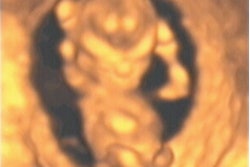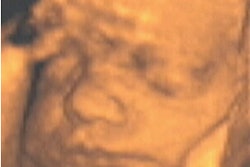Hand-carried ultrasound (HCU) is currently the fastest-growing product segment in the U.S. ultrasound market. Industry research has forecast the segment's revenue to more than triple by 2010. Luke Liem of Frost & Sullivan analyzes the future of ultrasound.
Ultrasound usage continues to expand, driven primarily by the availability of affordable imaging equipment, including hand-carried units that approach the performance level of high-end machines.
Windows PC-based architecture and device miniaturization are making it possible to pack increasing amounts of processing power into smaller and smaller medical devices. With no need for bulky lead shielding, ultrasound equipment can ride the miniaturization wave made possible by rapid advancements in software and semiconductor technologies.
Hand-carried ultrasound (HCU) is currently the fastest-growing product segment in the U.S. ultrasound market. Segment revenue, a mere $5 million in 1999, has grown at an explosive pace to reach more than $96 million by 2003. Industry research has forecast the segment's revenue to more than triple by 2010.
So why are hand-carried ultrasound systems so popular? Affordability, as well as the availability of smaller and lighter units and better image quality, are some of the reasons physicians have cited for purchasing the systems. In addition, HCU systems are typically priced in the $20,000 to $50,000 range, considerably lower than cart-based ultrasound systems, which can cost upwards of $100,000 to $250,000.
Physicians who practice in multiple office locations find that the newer HCU systems offer great performance and high portability, so they no longer need to invest in a separate ultrasound system for each location. An increasing number of traditional users (radiologists, cardiologists, ob/gyn physicians) are replacing their older cart-based systems with HCU systems capable of docking to accessory carts to become pseudo-cart-based systems.
Clinical information at the point of care
Ultrasound imaging enhances the physician's ability to evaluate, diagnose, and treat patients by providing actionable clinical information at the point of care. Emergency physicians are one group of clinicians who have emerged as new users of ultrasound.
When asked to comment on how ultrasound has changed his medical specialty in terms of patient care in the emergency department, Dr. Michael Blaivas, director of emergency ultrasound at the Medical College of Georgia in Augusta, said: "It is really affecting us in our care for the critically ill patients (this is what got us first into ultrasound) who arrive at the emergency room in imminent danger of dying. There are about six or seven main illnesses that need to be determined immediately at the bedside, and can be done by emergency physicians with ultrasound."
Medical societies are increasing the number of seminars and courses to meet the rising need for user training. To keep up with the growing use of ultrasound in various types of surgeries, the Chicago-based American College of Surgeons (ACS) has developed an ultrasound educational program for surgeons and surgical residents to provide them with a basic understanding of clinical ultrasound and knowledge of advanced clinical applications.
"The number of surgeons performing ultrasound is in the thousands. Many are purchasing their own equipment for outpatient clinics, and these physicians also utilize equipment in hospital," according to Dr. Edgar Staren, chairman of the ACS National Ultrasound Faculty. "Ultrasound courses that are offered by the college (ACS) are always full."
Increasingly, ultrasound is regarded as the standard of care for interventional procedures. In open-heart surgeries, cardiovascular anesthesiologists are performing transesophageal echocardiography (TEE), where a miniature ultrasound camera is passed down the patient’s esophagus behind the heart.
This form of ultrasound imaging allows the physician to obtain very-high-quality images of the heart and is instrumental in reducing cerebrovascular incidents (strokes) during cardiovascular surgeries.
"The driving force for adoption is not reimbursement. It is improved outcome and professional responsibilities," explained Dr. Mike Cahalan, head of the department of anesthesiology at the University of Utah in Salt Lake City. "The cardiac surgeons realize that this is an advantage to them, and are demanding them. Congenital heart surgeons will cancel the case without TEE."
Improved patient care or money pit?
Current debates on hand-carried ultrasound and the proliferation of ultrasound imaging within the practice of medicine have centered on its impact on utilization and reimbursement. There’s currently a lack of guidelines to ensure performance and interpretation standards across the specialties that use ultrasound. As more and more physicians utilize ultrasound imaging in their daily practice, there will inevitably be an increase in billing to Medicare and private insurers.
Ultrasound is effective in a wide range of clinical situations. And it can help reduce overall healthcare costs by replacing more expensive exams, such as MRI and nuclear medicine.
Another advantage is ultrasound's ability to improve clinical outcomes by providing immediate and actionable clinical information at the point of care (e.g. surgery, critical care and emergency medicine). We believe that instead of evaluating ultrasound reimbursement as a stand-alone cost bucket, healthcare providers and insurers need to look holistically at how ultrasound imaging can help reduce costs for the entire healthcare system.
By Luke LiemAuntMinnie.com contributing writer
January 26, 2004
Luke Liem is a medical imaging industry analyst at Frost & Sullivan, a Palo Alto, CA-based growth consulting firm. The data and analysis in this article are included in a recently published Frost & Sullivan report on the ultrasound market: "The U.S. Ultrasound Market (A675-50)." For more information, contact Charlie Turnbow at 210-247 2472 or via e-mail at [email protected].
Related Reading
Frost predicts tripling of non-mammo breast imaging in U.S., December 9, 2003
Frost sees growth in European equipment-services market, August 7, 2003
Image-guided/robot-assisted surgery markets to grow, June 18, 2003
Shift to full-field digital units will spur mammography market, April 30, 2003
Frost report pegs MRI market growth at 21% in 2002, April 22, 2003
Copyright © 2004 AuntMinnie.com



















